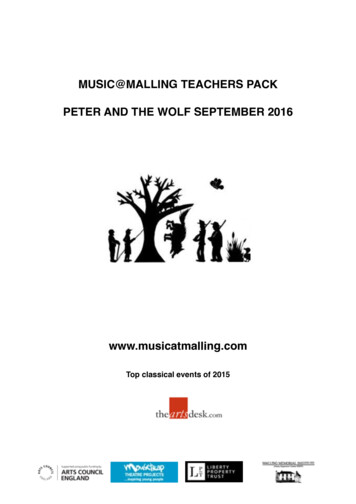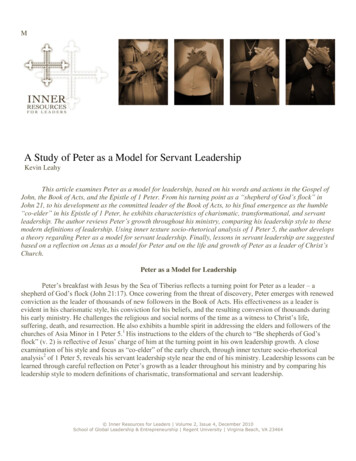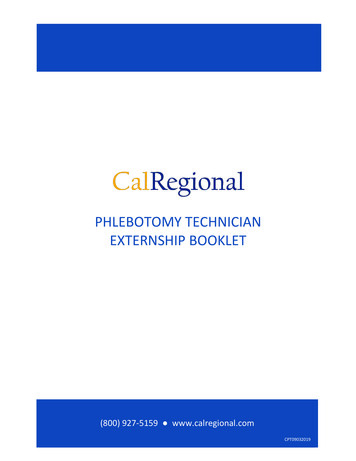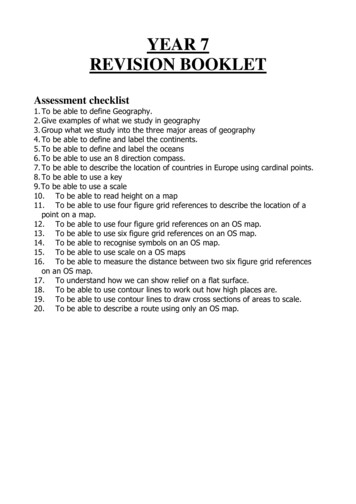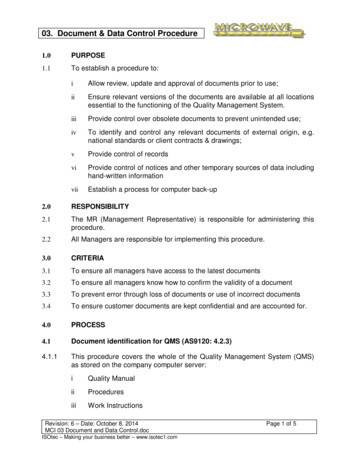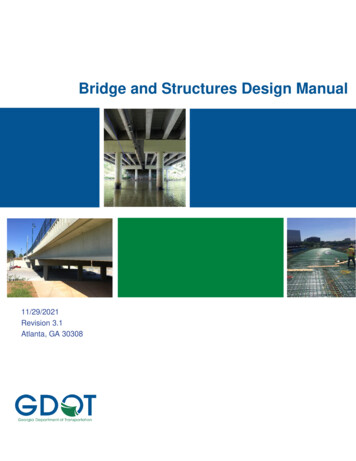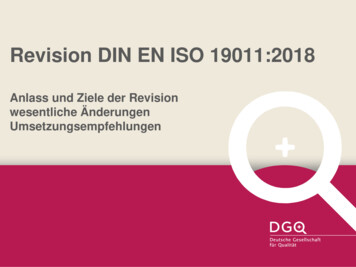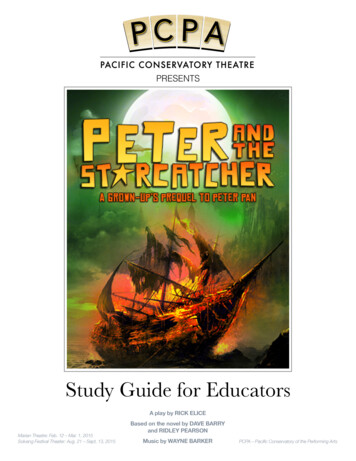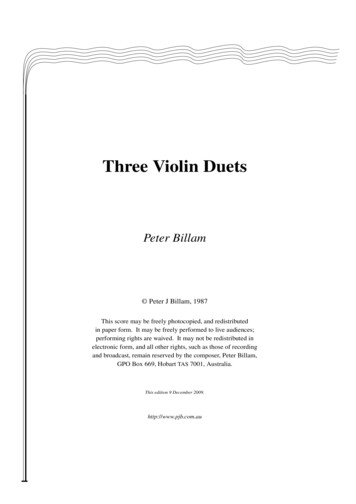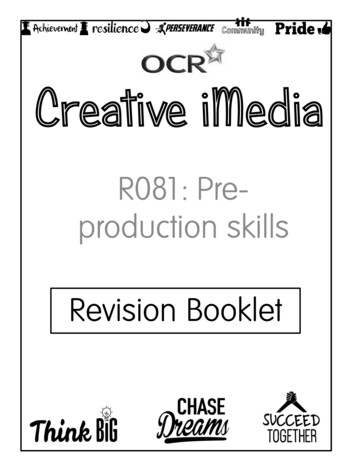
Transcription
Creative iMediaR081: Preproduction skillsRevision Booklet
Mood boardsPurpose of a mood board: Central focus of ideas in one place Used to generate ideas for a client to meet their approvalbefore creating the final product Used to share ideas and concepts using examplesContent of a mood board: Images Colours Text/fonts/styles/keywords Textures, fabrics and other materials Digital mood board sounds and video clips
Mind mapsPurpose of a mind map: Generate outline ideas quickly Develop and show links between different thoughts,aspects and processes of a projectContent of a mind map: Central node with the main theme Sub-nodes with interconnecting lines/branches Text Images can also be used
Visualisation diagramsPurpose of a visualisation diagram: Plan the layout of a still image in a visual manner Show how the finished item may lookContent of a visualisation diagram: Multiple images and graphics showing size and position Colours and colour schemes Position and style of text Fonts to be used Annotation providing more detail
StoryboardsPurpose of a storyboard: Provide a visual representation of how a media project willlook along a timeline Provide a graphical illustration of the sequence ofmovements Provide guidance on what scenes to film or createContent of a storyboard: Images Locations Camera shot types and angles Camera movement Shot length and timings Lighting Sound
ScriptsPurpose of a script: Identify the location where the action takes place Identify who will be in the scene Provide stage directions for actors and production crew Provide dialogue for actorsContent of a script: Set/locations Scene descriptions Scene/stage directions Camera shot types Camera movement Sounds and sound effects Names of actors/characters dialogue
Client requirementsWhether you are creating something for yourself or for a client,your project will have a set of client requirements.Purpose of client requirements: Provide the media developer with outline information andany constraints (timescale) Clear statement of what is to be producedContent of client requirements: Statement of what media product is needed Purpose of the media product Target audience Content Timescale Restrictions House style
Target audienceWho is the final product intended for?Categories: Age – need to be clear about the age group. (E.G. 6-12, 1218, 18-40, 40 ) Gender Location – local, national, international Ethnicity – background, culture, race, religion, languageResearchPrimary sources: the information is obtained first hand froman original sourceSecondary sources: the information is obtained second handwhere somebody else has created the dataPrimary Sources AutobiographyFirst-hand accountDiaryInterviewVideo footagePhotoOfficial recordsSecondary sources BiographySecond-hand accountHistory textbookMagazine articleReportOther people’s productsNews broadcast
Work plansPurpose of a work plan: Provide a timescale for the overall project to be completed To map out against time for all the different aspects of theprojectContent of a work plan: Tasks Activities Durations – amount of time a task is expected to take Timescales – how long the project will take Milestones – key dates when a section is completed Deadlines – date when something has to be done by Resources – what is needed Contingencies – back up plan, extra time if needed
Hardware and Software HardwareSoftwareThe devices and equipmentthat could used to create ordigitise pre-productiondocumentsTypes of applications installedon a device that could used tocreate or digitise preproduction documentsComputer systemKeyboardMouseGraphics encil/paper Microsoft Office Publisher –used to create a moodboard, storyboard,visualisation diagram MO Word – used to createa script, storyboard MO PowerPoint – used tocreate a mood board,visualisation diagram Web browser (IE, Chrome) Dedicated software – mindmap, Dreamweaver
Health & SafetyRecceA visit to a specific location that will be used forrecording purposes. The purpose is to checkaccess, see what is there, identify the bestpositions and assess environmentalconsiderations. May include: Location Access Lighting Health & safety issues Availability of power Environmental considerations Any other issuesRiskMust be stored to cover you and anyassessment organisation that you work for in case of claims. Identify hazards and dangers Decide who might be harmed and how Evaluate the risks and decide on precautionsto be taken Record findings and implement them Review assessment and update if necessary
Health & SafetyEyestrainEyes can become strained after staring at a computerscreen for a long time especially when working inbad light or with a poor screenSolutions: Use a screen filter Make sure you work in suitable light Don’t sit too close to the screen Take regular breaks (5 mins per hour) Have regular eye tests Have blinds available to avoid glare on thescreenBackpainThis can be due to poor posture or sitting in anawkward positionSolutions: Use a fully adjustable chair Use footrests so that legs are at a natural angle Take regular breaks to walk around Don’t slouch Have the monitor at eye levelRSI Repetitive Strain Injury is damage to the fingers andwrists due to repeated movements over a longperiod of timeSolutions: Use wrist rests Regular breaks Ensure workstations are the correct height
File formatsVideoFileFormats MPG - Compressed file formats MOV – small file size MP4 – fats loading onlineAudioFileFormats MP3 (compressed / small file sizes / good fordevices) AIFF (uncompressed / high quality / Mac only) WAV (uncompressed / high quality / Windowsonly)ImageFileFormats JPG (lossless compression; photography) PNG (lossless compression; photography) TIF (large file sizes / Posters / high qualityprinting) PDF (un-editable/ Documents) GIF (small file sizes/ Online / web buttons)
LegislationCopyright &Trademarks If its published it has copyright protection‘Published’ includes books, magazines, music,movies, all content on the internet.To use a published resources you must: Contact the owner Ask for permission to use it Often you will need to pay a feeCopyright OpenlicensesSome people are happy for their products to beused by others but still want to have someprotection.Creative Commons: A license agreement thecreator chooses that lets you use that personsresources. However, you will still need to cite thesource!Certification Different countries have laws on what is allowedto be seen and shown.Certification is the process of informing theaudience broadly on the suitability of content.Certification is a major aspect when thinkingabout your target audience
LegislationDataProtectionPrivacyA series of UK laws designed to protectindividuals and there personal data.Organisations can not collect and keep yourpersonal information without following this law.Everyone has right to view and correct data.Data has to be accurate, for a specific purposeand secure.People have this right and it should not beinvadedDefamation Can’t say nasty things about someone/anorganisation without proof.
Exam PracticeTick which type of pre-production document could be used for themedia products listed in the table:Mood boardMind mapVisualisationdiagramStoryboardScriptPoster forfestivalCD coverComic bookCompanywebsiteComputergameRadio advertWhat might you see on a script that is not shown on a storyboard?Shuttleworth College are holding a Summer Fair for the Community. Atthe summer fair will be many stalls, a BBQ and an ice cream van. Youhave been asked to create a visualisation diagram for a poster toadvertise the Summer Fair to show the headteacher
Exam Practice 2List THREE things that will be defined within the client requirements:What might you see on a work plan?What is the purpose of ‘contingencies’ on a work plan?What legislation restricts an organisation storing information about itscustomers?What legislation restricts an organisation copying and pasting imagesoff the internet?Identify THREE categories of a target audienceWhat could be used to digitise a hand drawn mind map?What software could be used to create a mind map?
Revision Booklet R081: Pre-production skills . Mood boards Purpose of a mood board: Central focus of ideas in one place Used to generate ideas for a client to meet their approval before creating the final
